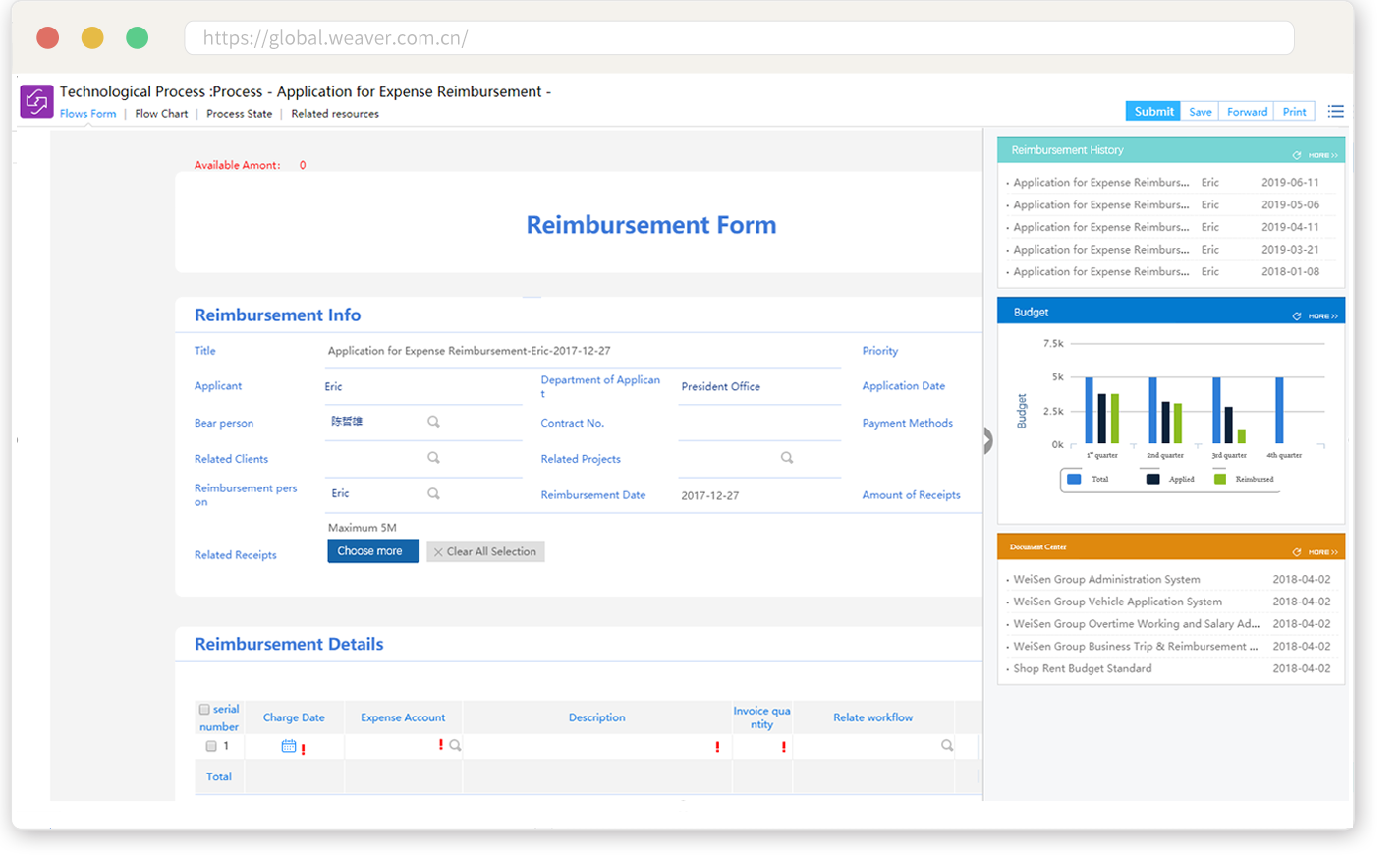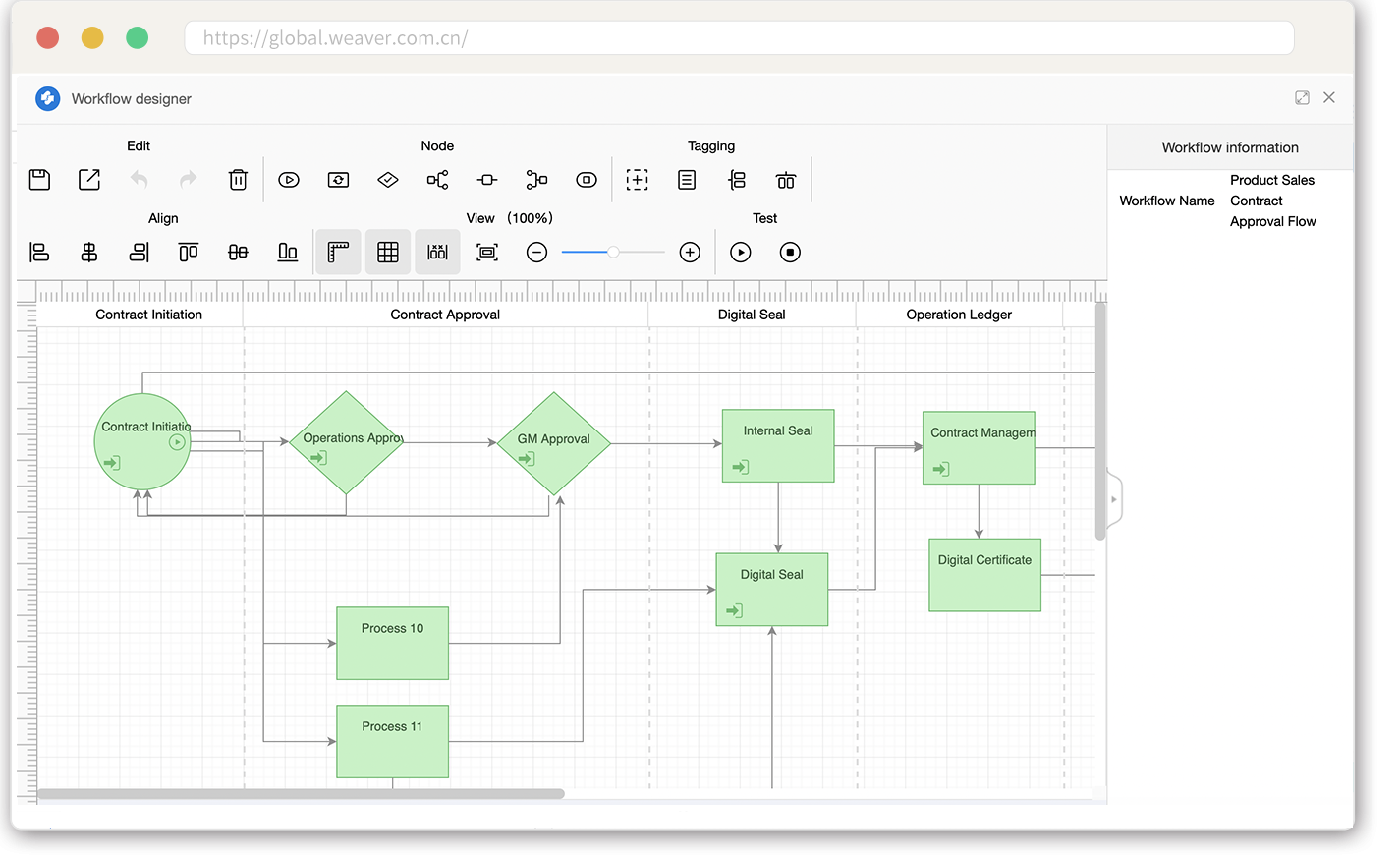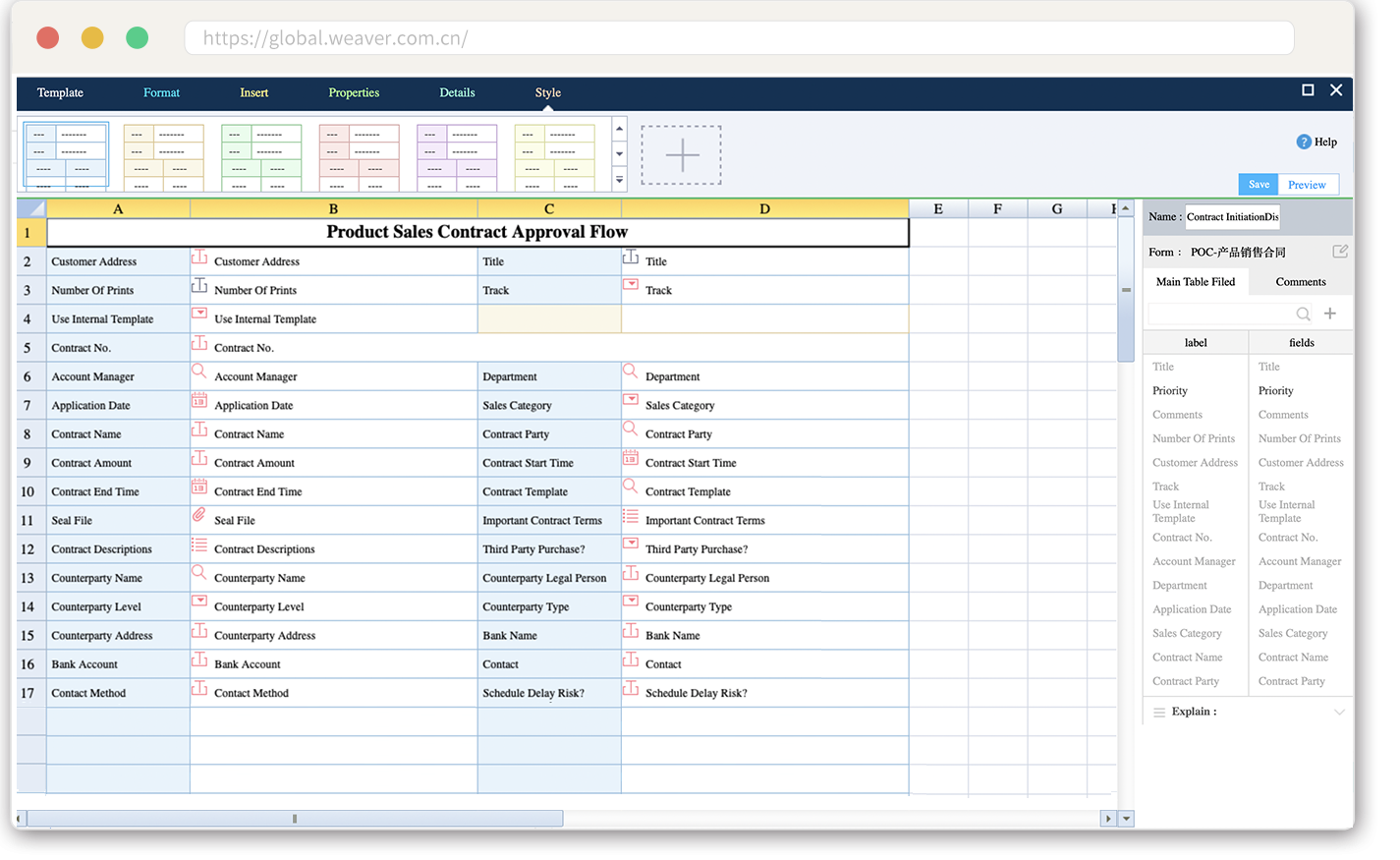-
Java Technology
cross-platform design, high security and good performance
-
Compliant with WfMC Standard
Five standard interfaces enabling interaction with any other third-party workflow engines
-
Relational Database
Support mainstream database including SQL or ORACLE , enhancing data standardization and reprocessing
-
SOA
Achieve seamless integration and improve integration with heterogeneous systems
-
Graphical Workflow Modeling
Graphical, drag-and-drop, and visualized tools for workflow modeling , simulating workflows quickly and improving implementation efficiency
-
B/S Architecture
Entire browser application, zero client, and low maintenance cost
-
Flexible Deployment Architecture
Support centralized or distributed deployment, enhancing the overall user experience and system performance
-
Visualized Form Design
Create forms just like using Excel, increasing form design efficiency and reducing implementation cost
-
Support of Multi-middleware
Support RESIN, WEBLOGIC, WEBSPHERE and other WEB servers , quickly adapting to the existing deployment
-
Customization Tool for Forms
Customize various kinds of data reports based on workflows and businesses, monitoring efficiency of workflow and providing insights for decision making
It's widely used is various scenarios both for internal staff (decision maker/managerial level/execution level) and external partners (clients/suppliers/distributors). It truly helps improve operating efficiency and standardize the management.
HR Management
New employees on board training application
Regular employment application
Overtime application
Leave request
Internal transfer application
Separation application
Administration Management
Asset management
Conference management
Vehicle management
Customer reception
Gift management
Business card application
License management
Finance Management
Costs control and management
Budget management
Fixed asset management
Invoice management
Payment management
Capital management
Marketing Management
Master product data management
Product promotion approval
Quotation management
Sales order management
Contract management
Marketing expense management
Information Management
Network resource management
IT fault management
System account management
IT application development management
Procurement Management
Purchase request management
Supplier development and evaluation management
Purchase order management
Quality Management
Corrective and preventive actions
Incoming quality control (IQC)
Defective goods dispose
Returns processing
Customer Service
Customer technical support management
Customer service quality tracking management




